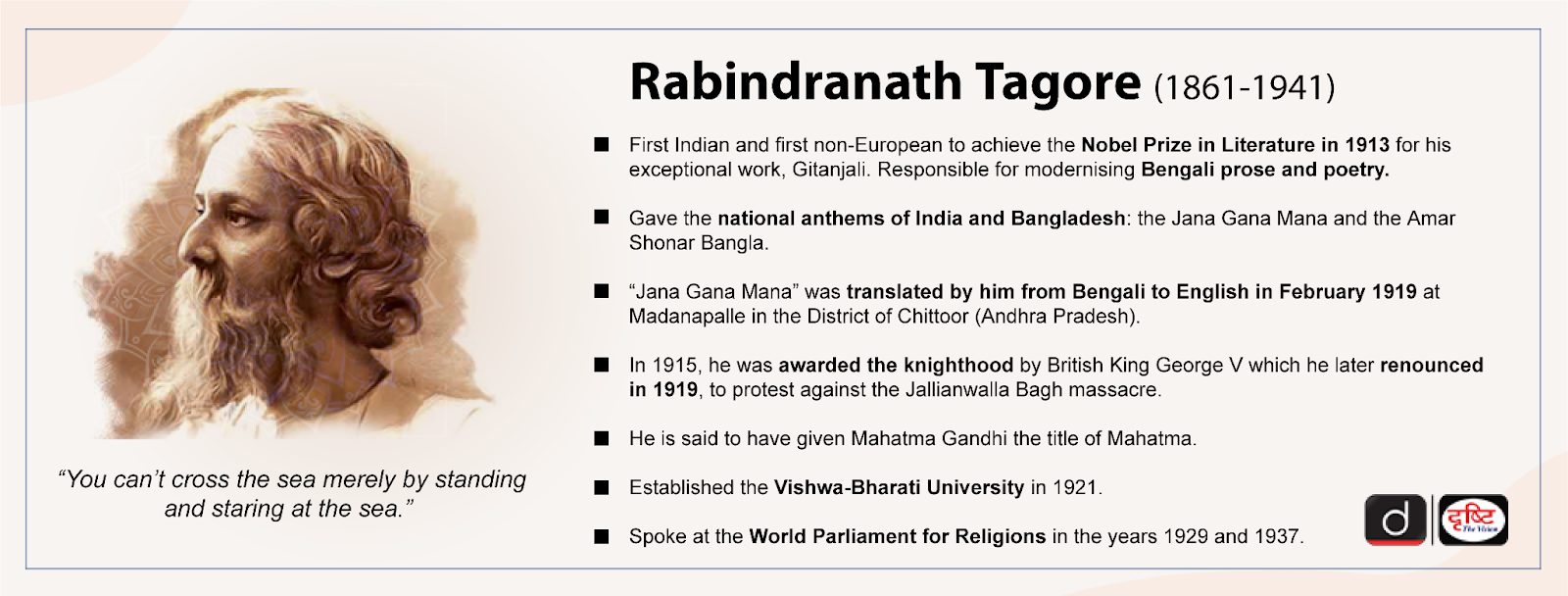Pantoea Tagorei | 28 Dec 2023
Why in News?
Researchers at Visva-Bharati University have discovered a new species of bacteria that could transform agricultural practices. They named it Pantoea Tagorei after the famous Nobel laureate Rabindranath Tagore.
What are the Key Facts About Pantoea Tagorei?
- Pantoea Tagorei bacteria belong to the genus Pantoea, which is part of the Enterobacteriaceae family.
- Pantoea bacteria can be isolated from various environments including Water, Soil, Humans, Animals, and Plants.
- It is described as a plant growth-promoting bacteria, Pantoea Tagorei has demonstrated remarkable capabilities in boosting the cultivation of crops like paddy, pea, and chilli.
- The bacteria efficiently extracts potassium from the soil, enhancing plant growth. Additionally, it facilitates the solubilization of both potassium and phosphorus, nitrogen fixation, and enhances overall nutrient availability for plants.
- Positive effects on plant growth suggest a potential boost in crop yield. It can aid in addressing critical issues related to food security.
- Pantoea Tagorei enhances soil nutrient availability, reducing the need for commercial fertilizers.
- Minimizing reliance on fertilizers, the bacteria offers a cost-effective approach to sustainable agriculture and it can be a potential Biofertilizer.
Biofertilizer
- Biofertilizer can be defined as biological products containing living microorganisms that, when applied to seed, plant surfaces, or soil, promote growth by several mechanisms such as increasing the supply of nutrients, increasing root biomass or root area and increasing nutrient uptake capacity of the plant
- They are made up of living organisms like bacteria, blue-green algae, and mycorrhizal fungi.
- Example:
- Bacterial Biofertilizers: e.g. Rhizobium, Azospirilium, Azotobacter, Phosphobacteria.
- Fungal Biofertilizers: e.g. Mycorhiza.
- Algal Biofertilizers: e.g. Blue Green Algae (BGA) and Azolla.
UPSC Civil Services Examination, Previous Year Questions
Prelims
Q. With reference to Madanapalle of Andhra Pradesh, which one of the following statements is correct?(2021)
(a) Pingali Venkayya designed the tricolour Indian National Flag here.
(b) Pattabhi Sitaramaiah led the Quit India Movement of Andhra region from here.
(c) Rabindranath Tagore translated the National Anthem from Bengali to English here.
(d) Madame Blavatsky and Colonel Olcott set up headquarters of Theosophical Society first here.
Ans: (c)
- The original song ‘Jana Gana Mana’ (National Anthem) was written in Bengali, but in a Sanskritized dialect known as Sadhu Bhasha.
- The idea of translating the song from Bengali to English came to Rabindranath Tagore while he was visiting the Besant Theosophical College on the invitation of Irish poet James H. Cousins. He penned down the English translation during his stay at Madanapalle, a small town in the Chittoor district of Andhra Pradesh.
- Jana Gana Mana was officially proclaimed as India’s National Anthem by the Constituent Assembly of India on 24th January 24, 1950.
- Therefore, option (c) is the correct answer.
Q. Which feature of some species of blue-green algae helps promote them as bio-fertilizers? (2010)
(a) They convert atmospheric methane into ammonia which the crop plants can absorb readily
(b) They induce the crop plants to produce the enzymes which help convert atmospheric nitrogen to nitrates
(c) They have the mechanism to convert atmospheric nitrogen into a form that the crop plants can absorb readily
(d) They induce the roots of the crop plants to absorb the soil nitrates in larger quantities
Ans: (c)
Exp:
- Cyanobacteria or blue-green algae is an example of a bio-fertilizer, a type of organic fertilizer which contains living organisms and harnesses naturally occurring inputs like solar energy, nitrogen, and water to ensure soil fertility and plant growth
- Blue green algae is photoautotrophic microbes. They have specialised cells whcih utilises solar energy to reduce atmospheric N2 into Ammonia. Ammonia is used by plants for growth and increased production.
- Therefore, option (c) is the correct answer.

